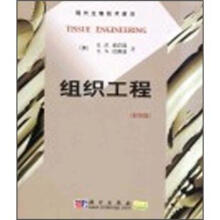Preface
1 Introduction
1.1 Cells as Therapeutic Agents
1.2 Illustrative Examples
1.3 Cell Numbers and Growth Rates
1.4 Outline of Book
1.5 Summary
1.6 Further Reading
Part Ⅰ Quantitative Cell and Tissue Biology
2 Tissue Organization
2.1 Tissue Components
2.2 Tissue Types
2.3 Functional Subunits
2.4 Problem Decomposition
2.5 Summary
2.6 Further Reading
3 Tissue Dynamics
3.1 Dynamic States of Tissues
3.2 Homeostasis in Highly Prolific Tissues
3.3 Tissue Repair
3.4 Tissue Dynamics as Interacting Cellular-Fate Processes
3.5 Summary
3.6 Further Reading
4 Morphogenesis
4.1 Morphogenic Processes
4.2 Morphogenic Dynamics
4.3 Constraints on Morphogenesis
4.4 Summary
4.5 Further Reading
5 Stem Cells
5.1 Basic Concepts
5.2 Examples of Stem-Cell Systems
5.3 Dynamic Function of Stem-Cell Systems
5.4 Summary
5.5 Further Reading
6 Cellular-Fate Processes
6.1 Cell Differentiation
6.2 Cell Migration
6.3 Cell Division
6.4 Cell Death
6.5 Dynamics of Interacting Cellular-Fate Processes
6.6 Summary
6.7 Further Reading
7 Coordination of Cellular-Fate Processes
7.1 Soluble Signals
7.2 Cell-Extracellular Matrix Interactions
7.3 Direct Cell-Cell Contact
7.4 Response to Mechanical Stimuli
7.5 Interaction Between Signaling Mechanisms
7.6 Summary
7.7 Further Reading
Part Ⅱ Cell and Tissue Characterization
8 High-Throughput Biological Data
8.1 Basics of Molecular Biology
8.2 Genomics
8.3 Transcriptomics
8.4 Proteomics
8.5 Metabolomics
8.6 Phenomics
8.7 Era of Systems Biology
8.8 Summary
8.9 Further Reading
9 Cell and Tissue Properties
9.1 Basic Tools
9.2 Measurement of Cell Characteristics
9.3 Measurement of Tissue Characteristics
9.4 Summary
9.5 Further Reading
10 Cell and Tissue Culture
10.1 Definition and History
10.2 Types of Tissue Culture
10.3 Media
10.4 Culture Environment and Maintenance of Cells In Vitro
10.5 Characterization of Cell Function in Tissue Culture
10.6 Cryopreservation
10.7 Contaminants
10.8 Summary
10.9 Further Reading
11 Gene Transfer
11.1 Gene Transfer for Gene Therapy
11.2 Gene-Transfer Methods
11.3 Retrovirally Mediated Gene-Delivery Process
11.4 Gene Transfer for Modifying Cellular Functions
11.5 Summary
11.6 Further Reading
Part Ⅲ Engineering Methods and Design
12 Time Constants
12.1 Definition of Time Constants
12.2 Important Time Constants
12.3 Simplifying Dynamic Descriptions
12.4 Summary
12.5 Further Reading
13 Scaling up for Ex Vivo Cultivation
13.1 Using in vivo Conditions as a Guide
13.2 Key Design Challenges
13.3 Fluid Flow
13.4 Cellularity
13.5 Geometry of the Microenvironment
13.6 Multivariable Optimization
13.7 Summary
13.8 Further Reading
14 Cell Separation
14.1 Basis for Cell Separation
14.2 Characterizing Cell Separation
14.3 Practiced Cell-Separation Methods
14.4 Summary
14.5 Further Reading
15 Biomaterial Scaffolds
15.1 Biomaterial Properties
15.2 Types of Biomaterials
15.3 Summary
15.4 Further Reading
16 Tailoring Biomaterials
16.1 Tailoring Surface Chemistry and Topography
16.2 Subcellular Length Scale(

 缺书网
缺书网 扫码进群
扫码进群





